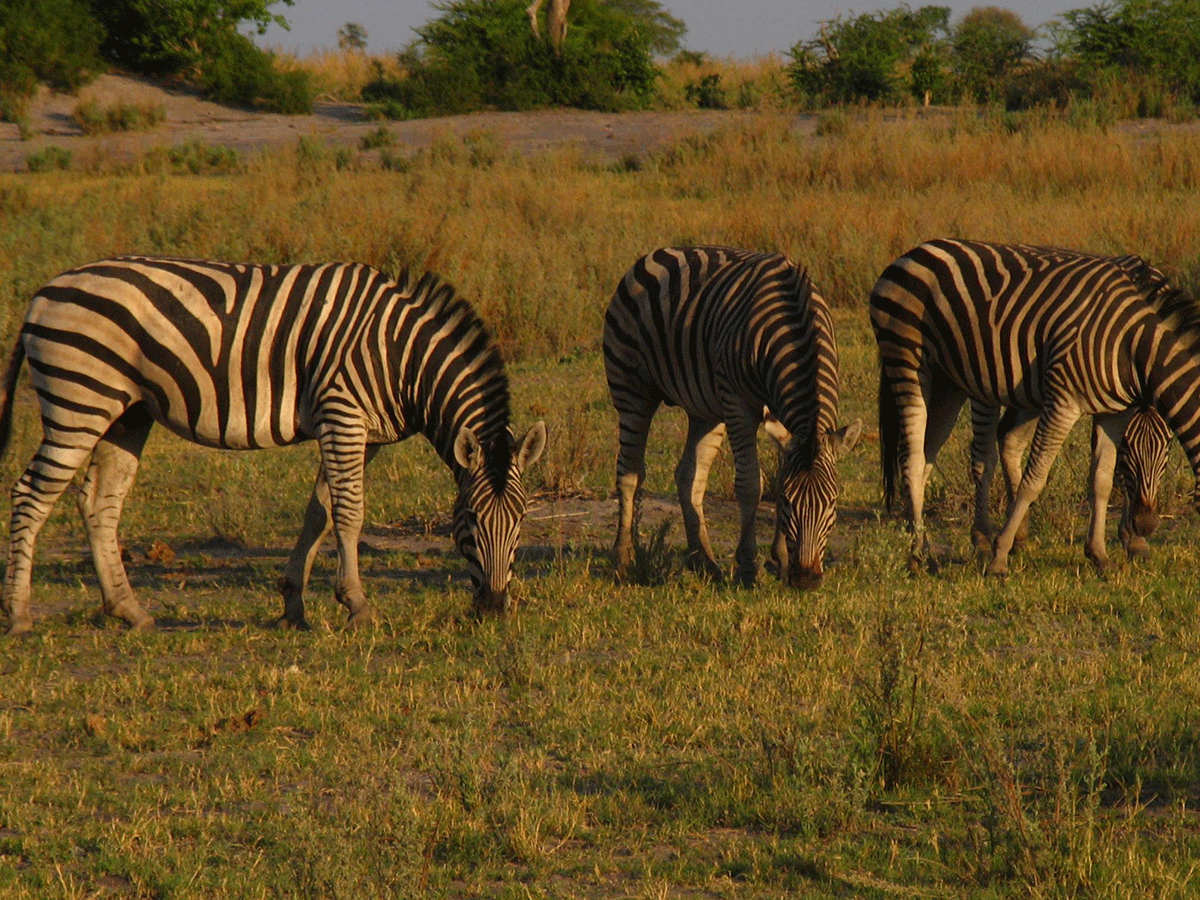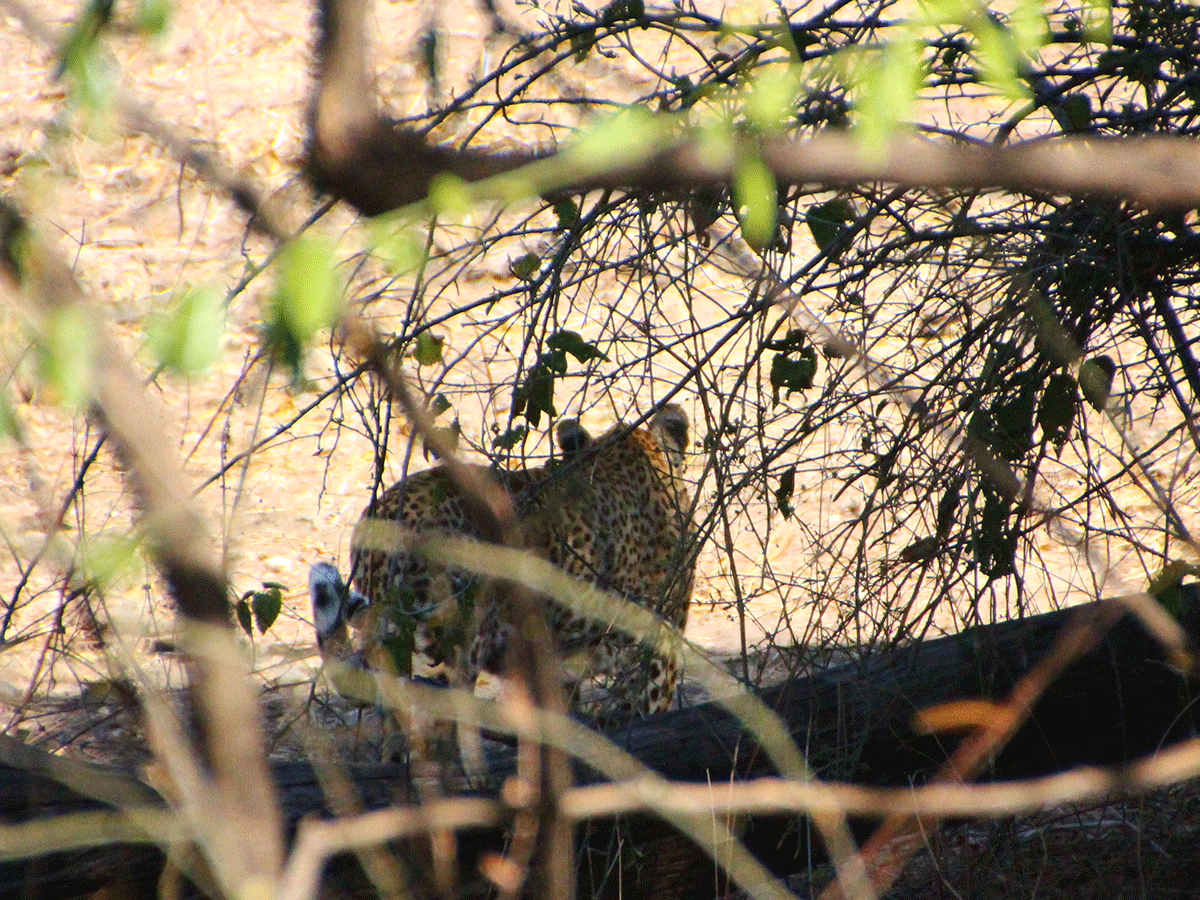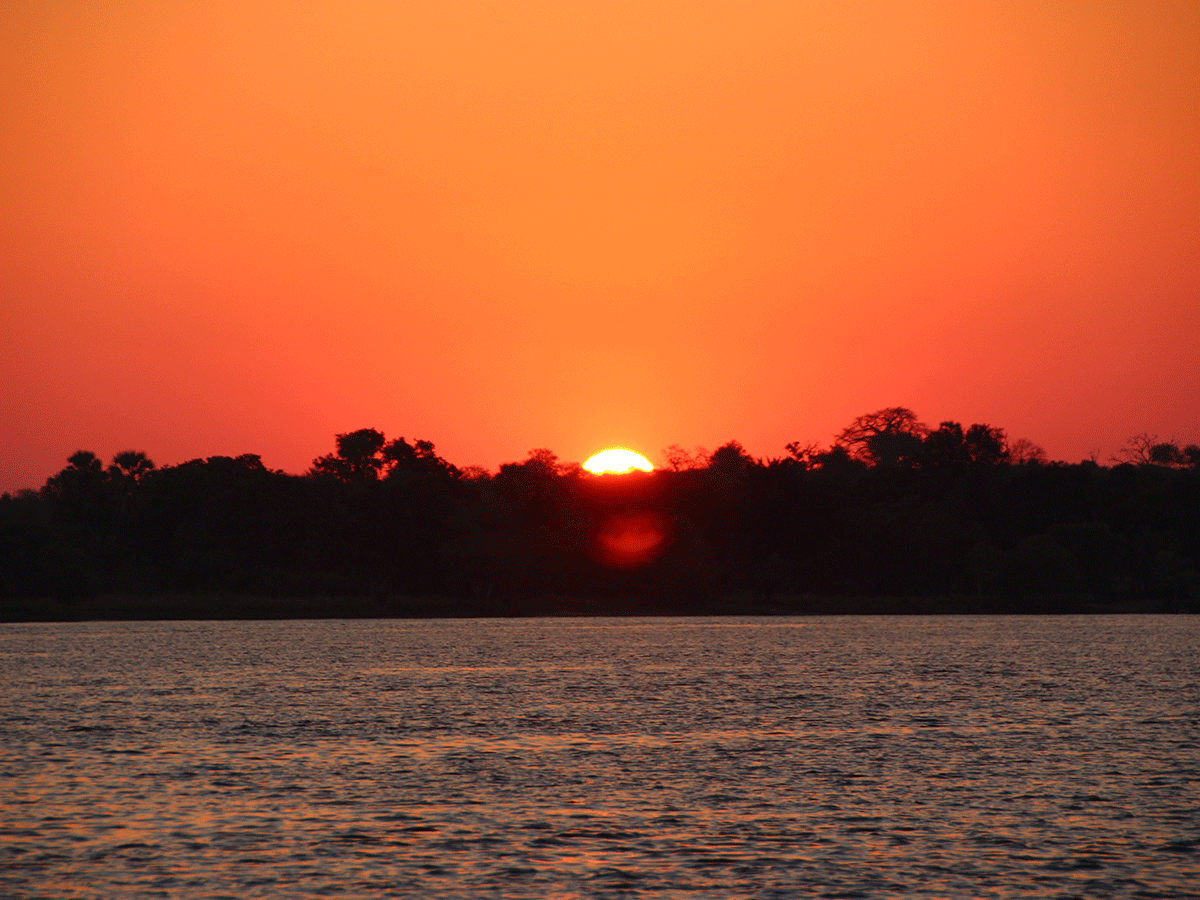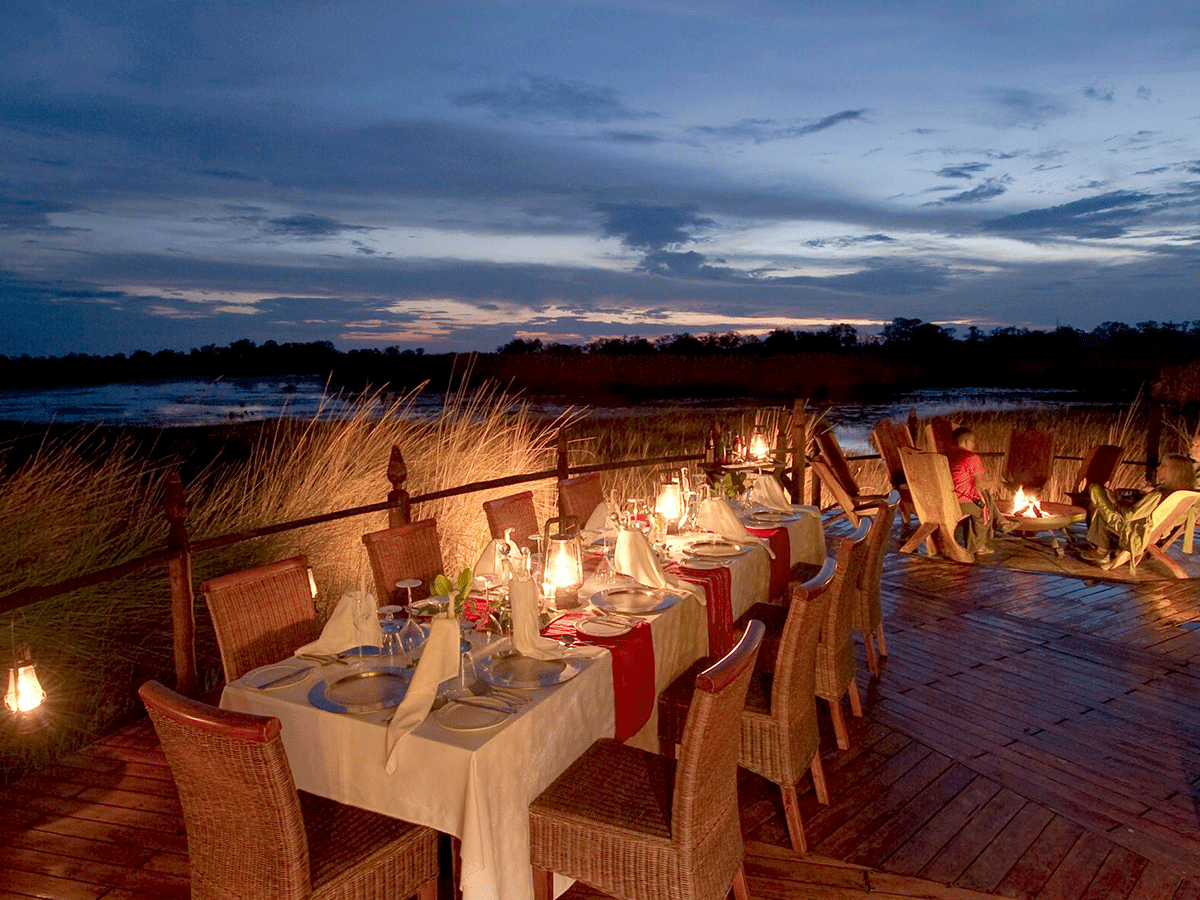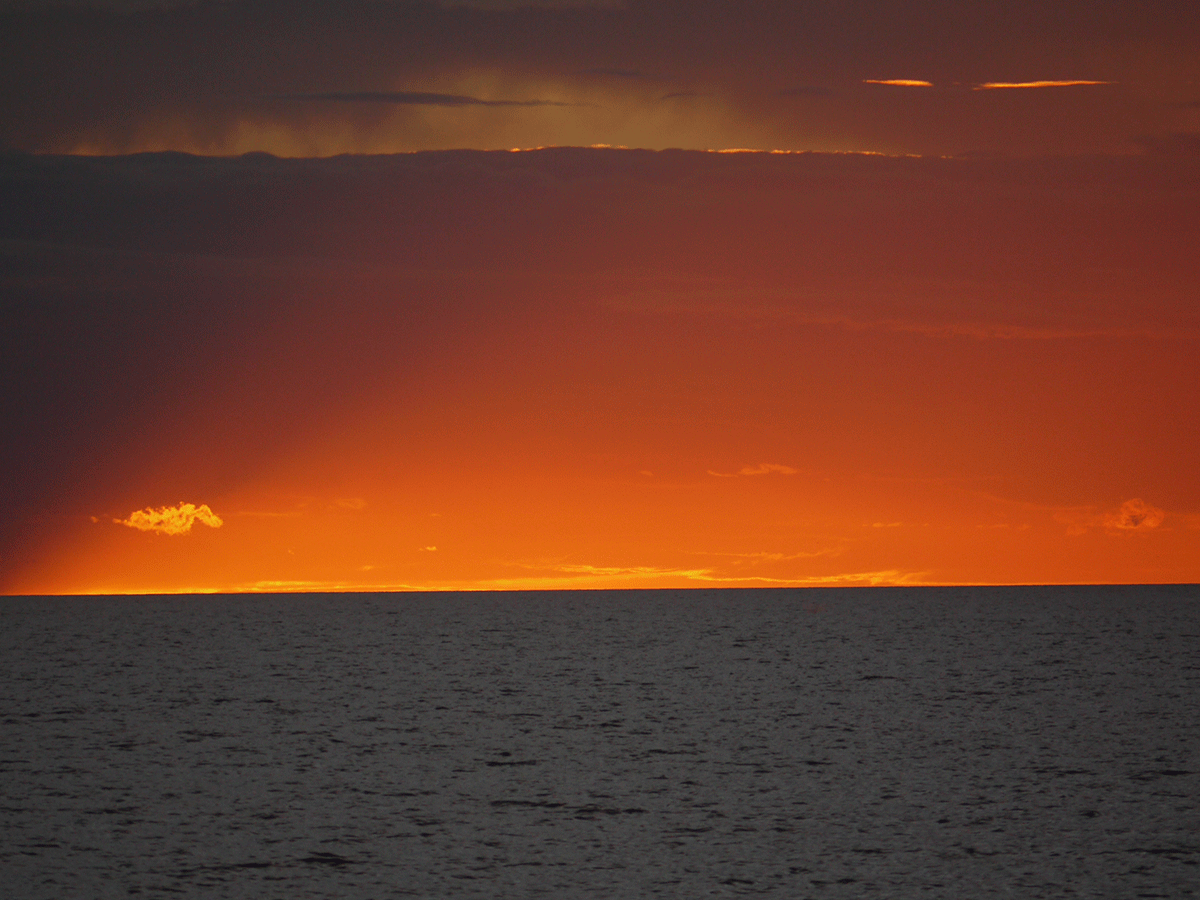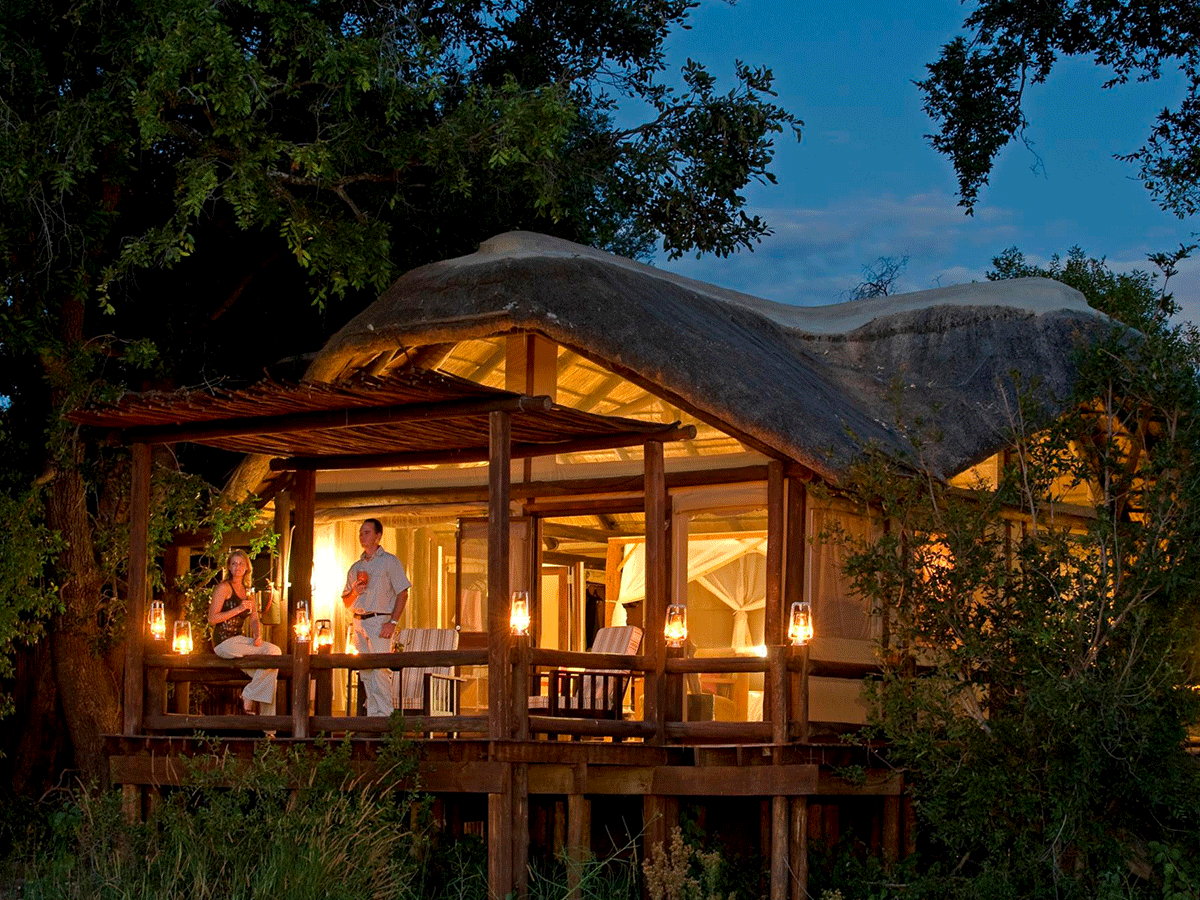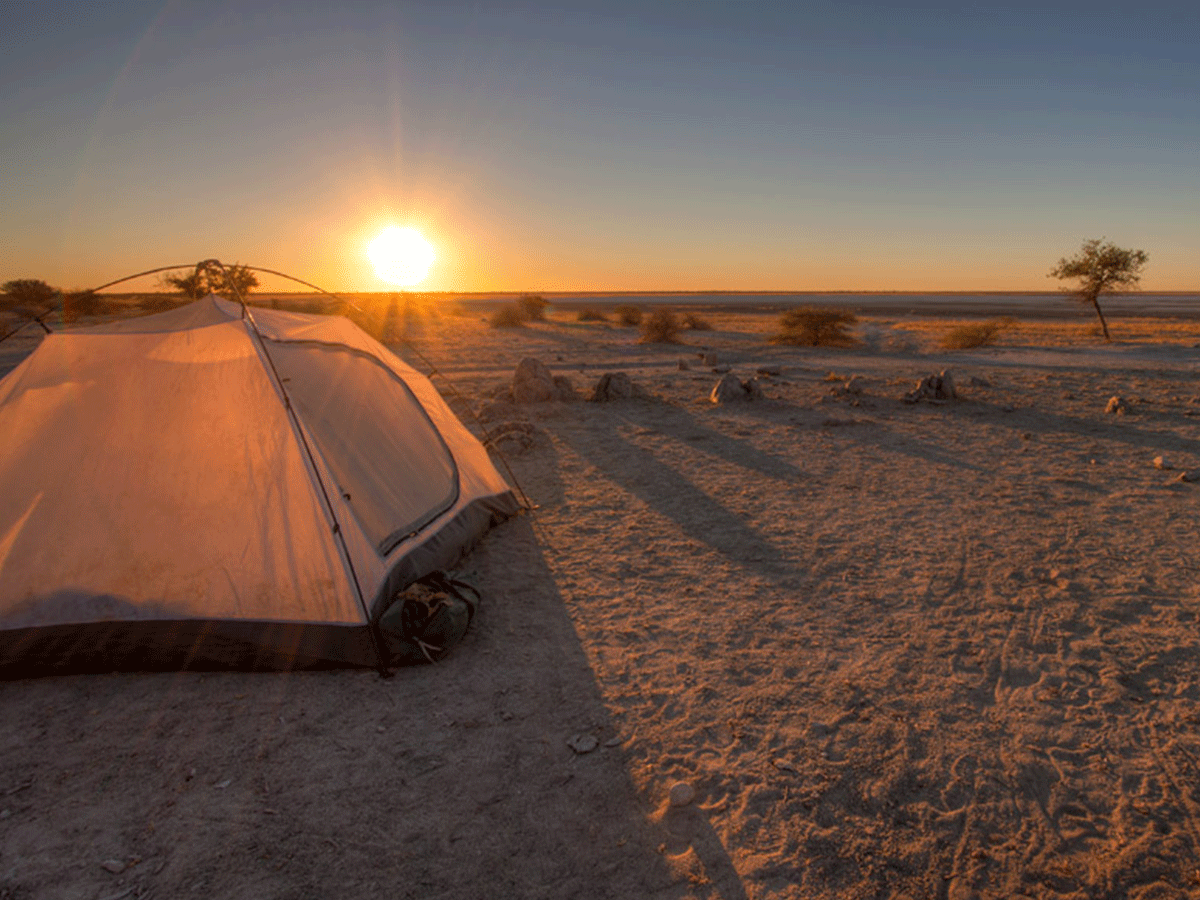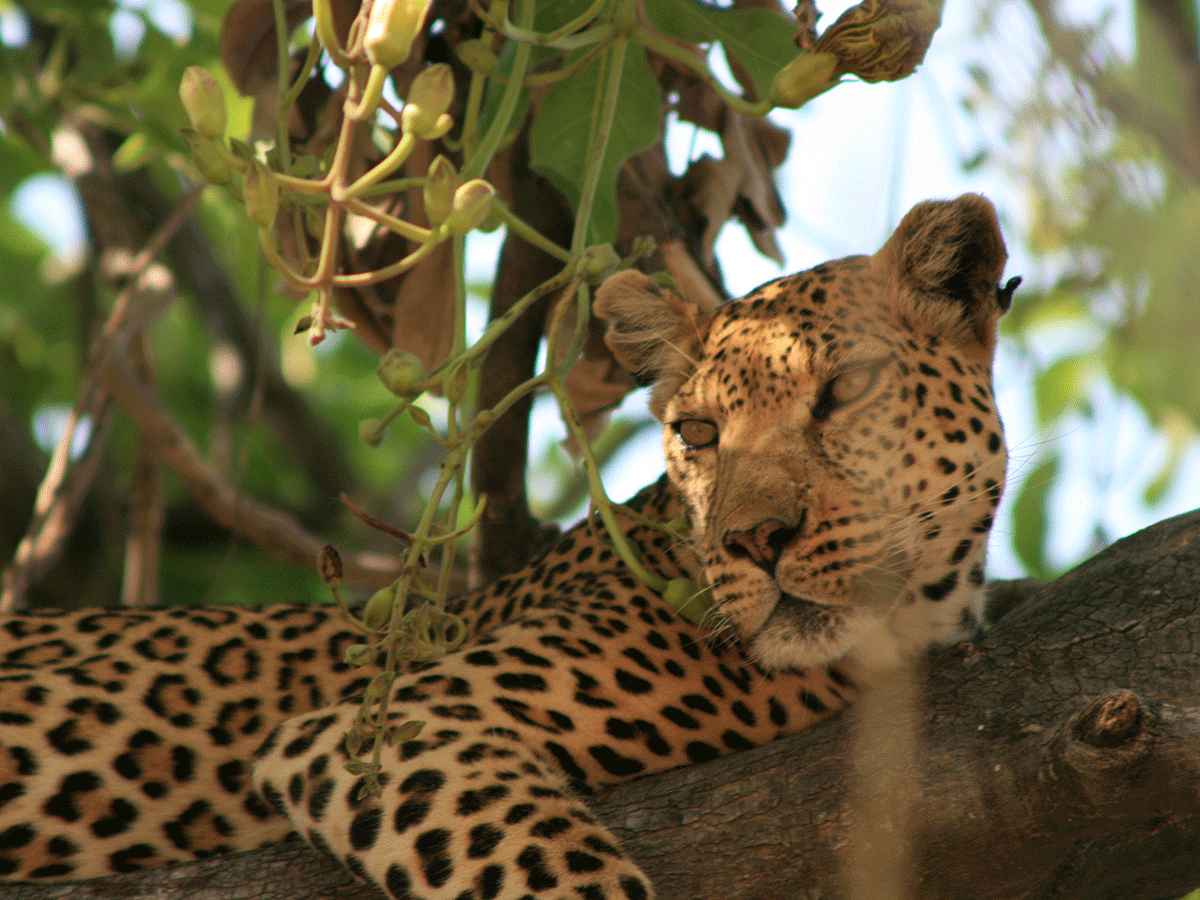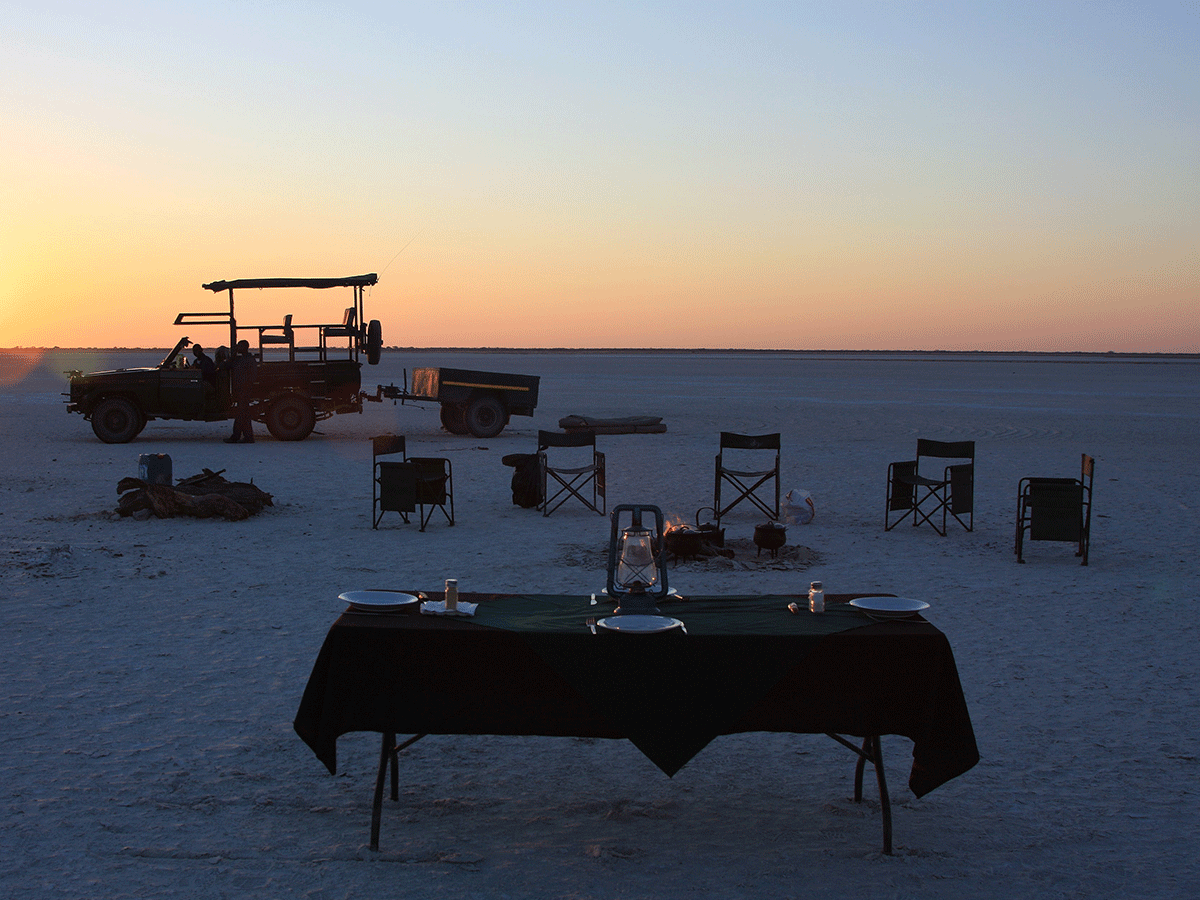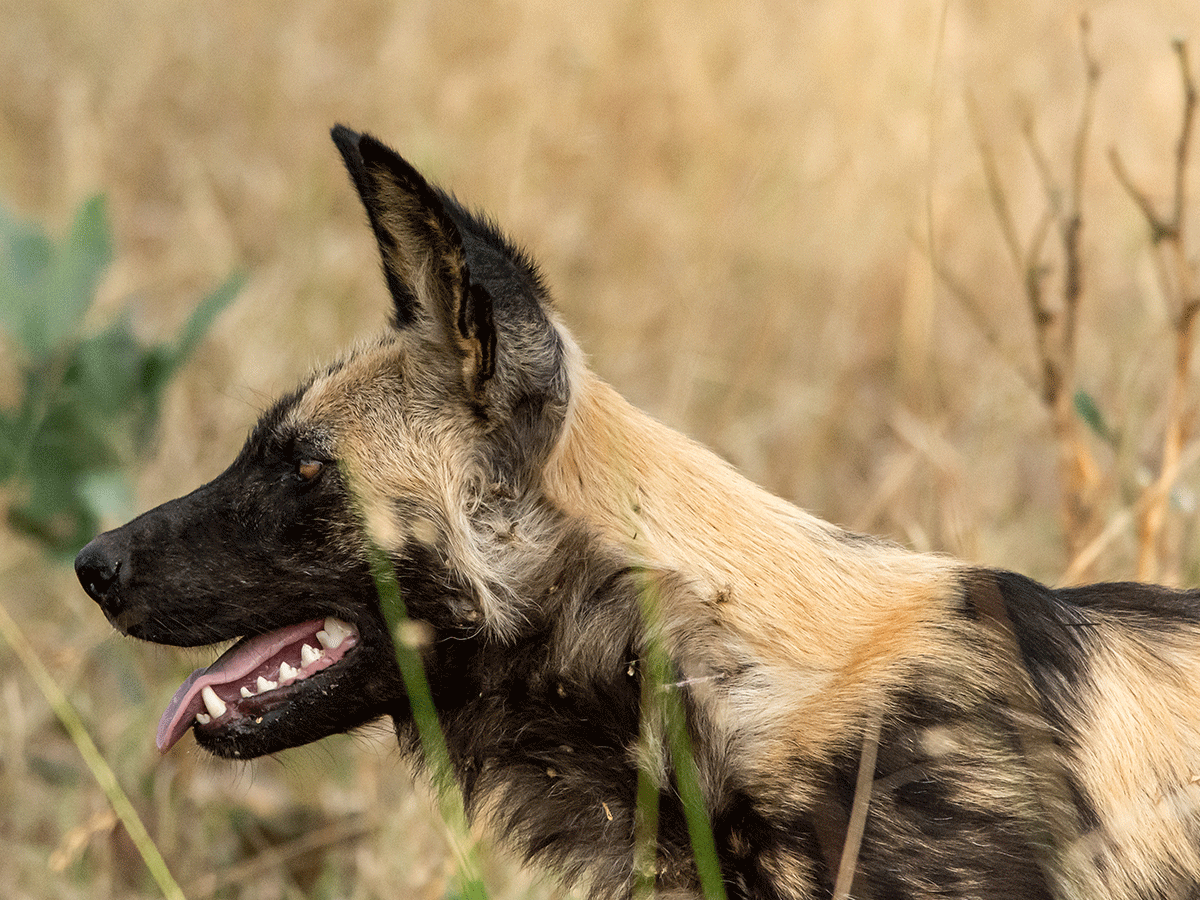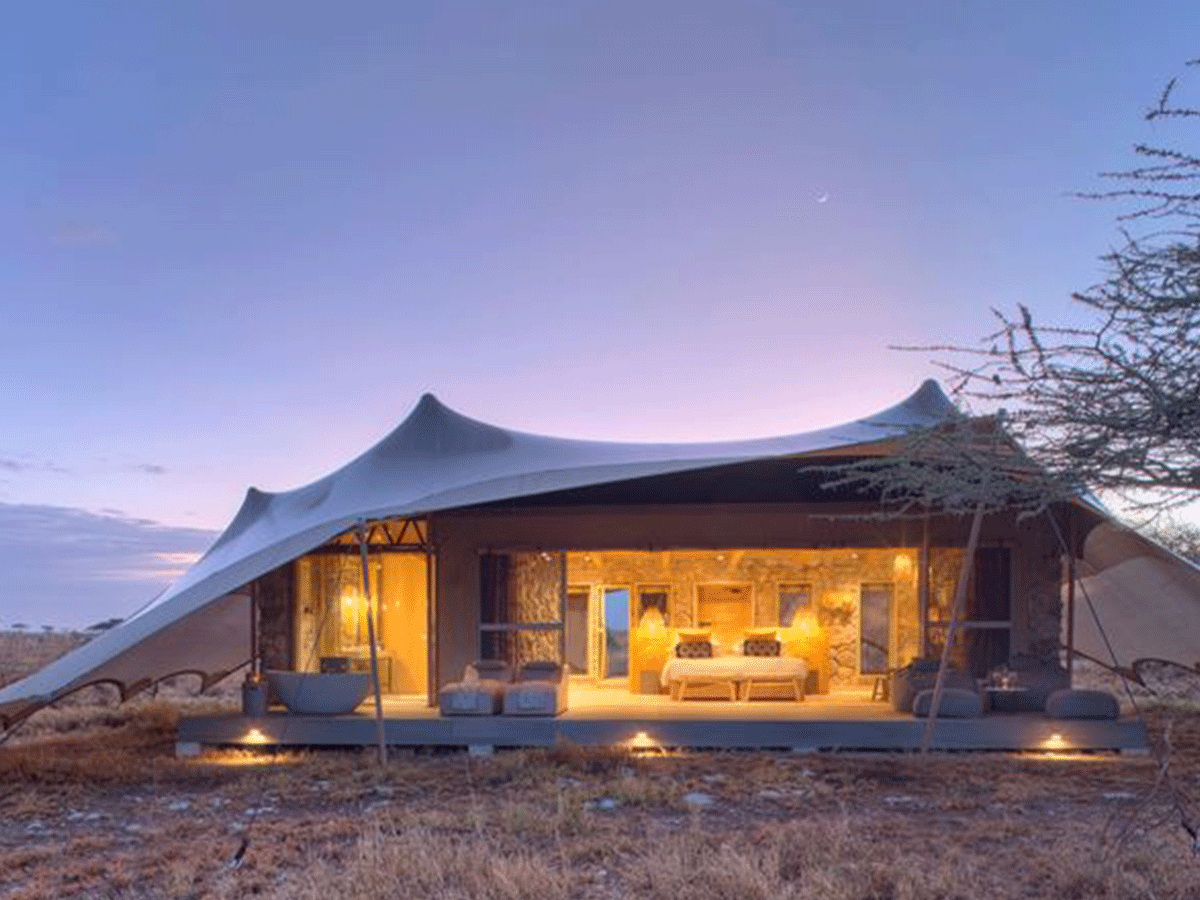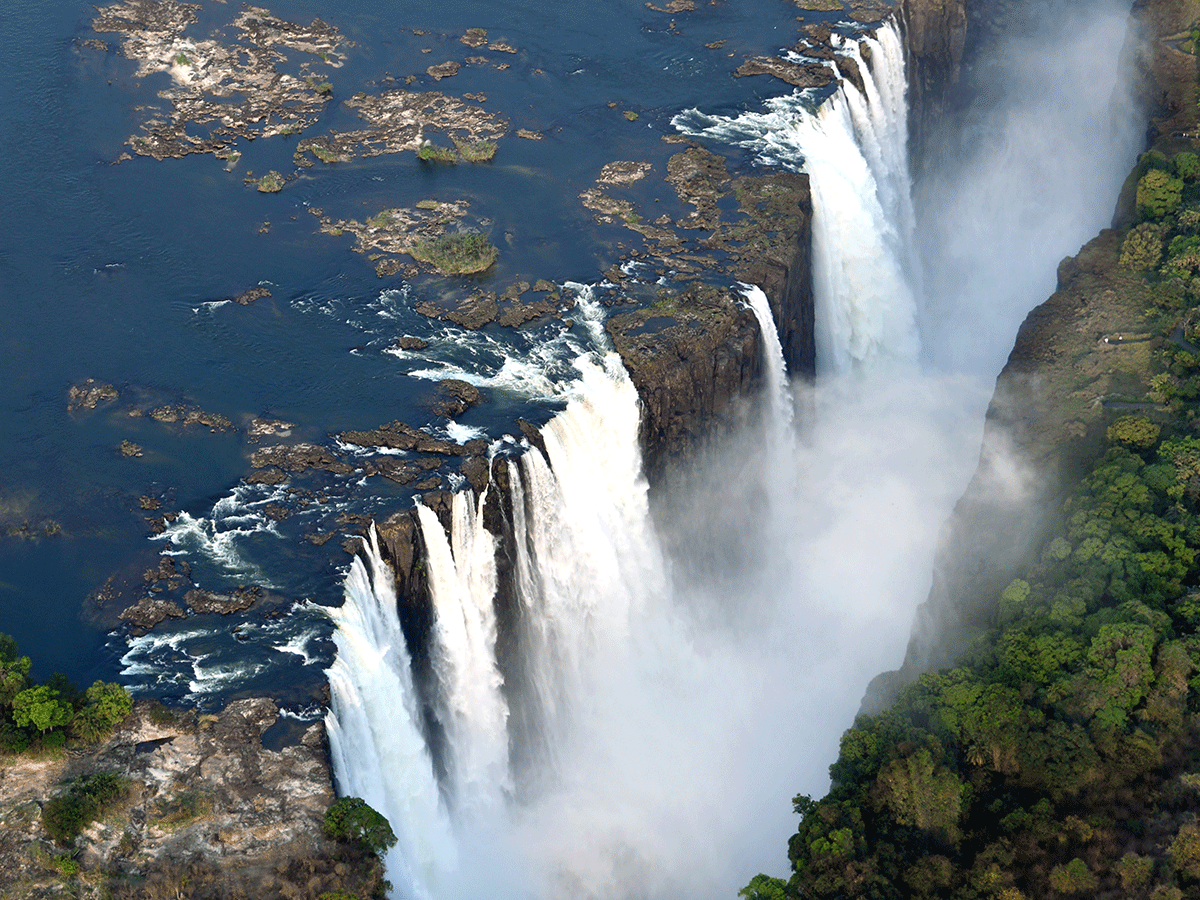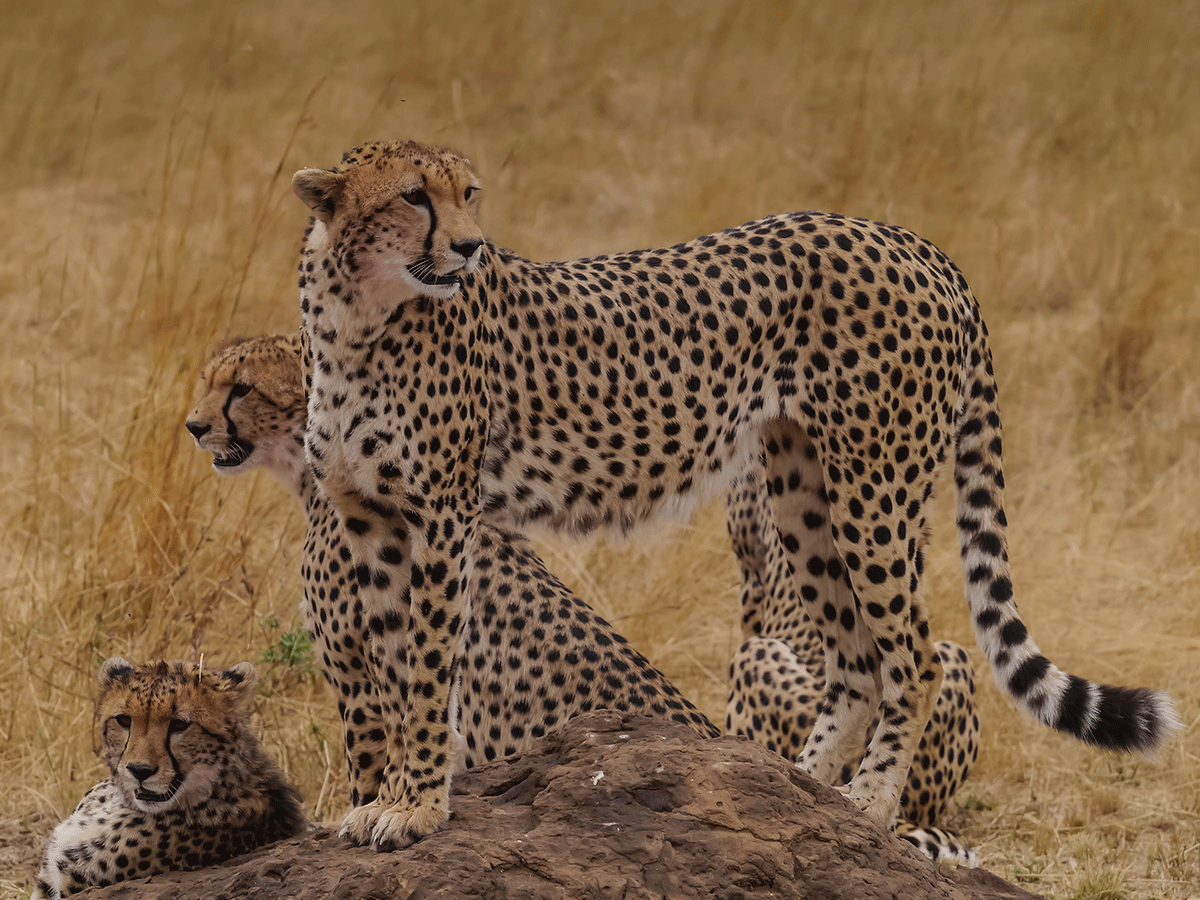Chobe National Park Luxury Fly in Safari Holidays
Home » Best African Safari Tours & Holidays » Chobe National Park Luxury Fly in Safari Holidays
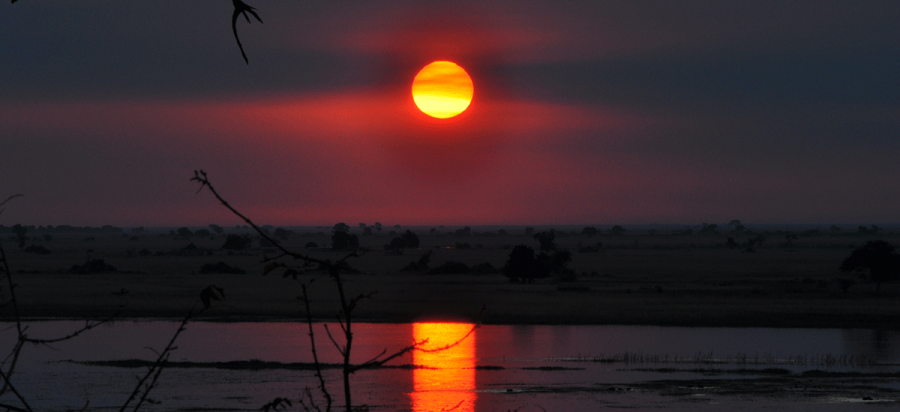
Chobe National Park Luxury Fly in Safari Holidays
The original inhabitants of Chobe were the Bushmen, followed by the – impressively named – Hambukushu, Bayei and Basubiya. In the 1850s, locals saw explorer David Livingstone passing through the area on his way to the Victoria Falls (a little over an hour away from Chobe National Park), and some big-game hunters seeking trophies and ivory. Luckily, for all the flora and fauna of this unique land, the area was first protected as a game reserve in 1961 and proclaimed as National Park in 1968.
Botswana’s Chobe National Park links the Okavango Delta to other protected areas in north-eastern Botswana and helps to safeguard vital wildlife corridors. It’s perhaps best known for its large herds of elephants, but these are just one aspect of the incredible diversity of animals and landscapes on display in this remarkable region.
Chobe national park is famous for its massive elephant populations, big herds of buffalo matched only by some large lion pride and incredible birdlife, Chobe National Park will leave an everlasting memory. Where else can you find such an amazing riverfront, with bustling wildlife, undisturbed predators, heavenly landscapes and tranquil lodges? The most accessible area of the park is the Chobe Riverfront; this is also where you will find the largest concentration of wildlife. For a more predator-rich area: head off to Linyanti Marshes. Or nourish your soul in the remote Savuti area. Wherever you go in this park, wildlife encounters are plentiful and all of Chobe feels like true wilderness. It is a place that can be enjoyed by everyone: couples, families and seasoned Africa travellers deemed wildlife enthusiasts.
See our popular Chobe National Park Safaris
Chobe National Park Biodiversity
Whenever you are close to the Chobe River, you will notice a broad variety of lush green bushes and trees. Away from water sources, the bushes get thicker and thorny, with a few open areas.
Although Chobe National Park is a wildlife paradise, trying to describe it as a whole would be a mistake. Chobe consists of many different smaller ecosystems, each with its own vibe, different vegetation and animal population.
You can encounter Chobe’s wildlife across the entire park. When the dry season begins, large herds of elephant and buffalo seek the permanent waters of the Chobe and Linyanti Rivers. Imagine thousands of them, coming sometimes all the way from Zimbabwe’s Hwange National Park. All year round, Chobe’s big game includes zebra, impala, baboon, blue wildebeest, kudu, giraffe, warthog and Vervet monkey. Lions and the spotted hyena are very common; together they are the dominant predators, bringing you spectacular encounters with big buffalo herds. The riverfront is the hotspot to see hippo, crocodile and the slightly odd, leguvaan (the second-longest lizard of Africa).
And, although seen less, the incredible cheetah, leopard and Africa’s rare wild dog roam the Chobe area frequently. Your guide will keep an eye out for these unique animals: seeing them in their natural environment is an unforgettable experience. If you are very lucky, you might even spot the rarely seen, white rhino. Reintroduced in Botswana in 2001, they are spreading gradually. So a wandering rhino might turn up!
Some Chobe safari lodges offer night drives on their own property; a very exciting and special trip. At night, the nocturnal animals emerge, such as bush babies (adorable fluffy animals with big eyes), African wildcats and honey badgers.
If there is one more thing that needs our special attention, it is the overwhelming birdlife in Chobe National Park. With over 450 bird species, there is no way we can list them all. So, here are a few highlights.
Hop on a boat for a river cruise and spot kingfishers, a high density of fish eagles and African skimmers. Stay on the lookout for bee-eaters, hammerkops and wire-tailed swallows. Also, the borders of the islands and Chobe floodplains are where you want to be: storks, geese, herons and many, many plovers. Unusual, but definitely worth seeking are the rufous bellied and white-backed night herons, with their long beaks and elegant crest.
Overall, even if you are not a birdwatcher, these frolicking feather bundles will steal your heart, right from the moment they appear in front of your binoculars.
Areas of interest in Chobe National Park
Chobe is an immense wildlife sanctuary and is large enough to contain four distinct areas: the Chobe Riverfront, Savuti, Linyanti, and Nogatsaa.
The Chobe Riverfront
In terms of sheer numbers of animals, the Chobe River during the dry season is unbeatable. Whether you follow its course by boat or vehicle, you’ll soon lose count of the animals you see. While elephant and buffalo steal much of the limelight, specialist antelope like the puku and red lechwe are also present in numbers. In recent years, the one missing piece of the Chobe jigsaw – rhino – have started to make a comeback.
Savuti
This is the land of the “stolen river” – a mysterious channel that periodically disappears and reappears due to tectonic movements. Its presence or absence transforms the area from a ribbon of savannah grassland into a seemingly permanent river – and then back again. Its terminus at the Savuti Marsh is a place that’s as wonderful as it is wild.
Linyanti
Centered on the Linyanti River, this area to the north of Savuti is defined by Rift Valley fault lines and faces Namibia’s Caprivi Strip. It’s a remote, untouched region. As you travel westward, it eventually becomes the Selinda Reserve and the Mamili National Park on the Kwando River.
Nogatsaa
Even more secluded, this area comprises vast grasslands and deciduous woodlands. Natural clay-bottom pans fill during the rains and are supplemented by borehole water during the dry season.
You might also like
Top activities in Chobe National Park Botswana
The dramatic, diverse landscapes and prolific wildlife of Chobe can be explored and encountered on foot, by vehicle or by boat. Experienced local guides add rich layers of detail and interpretation, or you can opt to self-drive in many parts of the National Park.
Game Drives
Chobe Game drives are the number one way to experience the Kasane and the Chobe National Park.
We have custom-built 4×4 safari vehicles. They have open sides which promise exceptional views of the wildlife for the guests. Professional safari guides lead the game drives in the Chobe Park. Their experience and knowledge provide great insight into the animals’ whereabouts and their behavior.
Chobe sightings
We can’t guarantee specific sightings, but elephants are almost a given, as Chobe has the highest concentration of these fascinating giants in the world! Buffalo, zebra, hyena, giraffe, red lechwe, hippo and crocodiles are often spotted.
The birdlife is amazing in Chobe with over 460 species of birds.
If you’re lucky you can see the big cats like lions and leopards. There are cheetahs too, but they’re very elusive and favor the Linyanti region of the park.
Boat Cruises
Sunset boat cruises offer superb opportunities to view the wildlife on the banks of the river, with herds of elephant splashing their way across providing an unforgettable spectacle. The calls of African fish eagles provide a unique soundtrack.
Photographic Safaris
Capture every moment of your Chobe experience, with professional wildlife photographers available to teach you the tricks of the trade.
Fishing
Fishing trips on the Chobe River are easily organized with an experienced guide and gear provided. The waters teem with game fish species, including the ferocious tiger fish.
Guided Walking Safaris
Walking safaris in Africa provide for some of the most dramatic activities and sightings on any safaris, and there are a number of wilderness areas around Africa where walking is offered. Up until a few years ago, Botswana was not on “the list” of popular walking safari destinations but in recent years more and more visitors to the country are choosing this activity.
Bush Walking Safari
Most lodges outside the national parks and reserves offer walking as an activity in the morning and afternoon where guests get the opportunity to see the things they would not see on a regular game drive. The chance of getting close to animals on foot is also a big attraction of these walking safaris.
Walking with the San
The San Bushmen peoples are the original inhabitants of the wilderness areas of Botswana and they share an almost spiritual relationship with the earth and one of the many attractions of a safari in Botswana is the opportunity to spend time on foot with these fascinating individuals.
The San share their intimate knowledge with guests, showing how to survive in the harsh environment of the Kalahari Desert by indicating which plants are safe to eat and which contain water. This walking safari is unique in Africa and many people travel to the Kalahari regions of Botswana just to participate in this experience.
Overnight Walking Trails
Aside from the walking activities offered at the lodges the traditional walking safaris over a couple of days are becoming very popular in Botswana, with a number of areas offering outings of three days or more. The Selinda region and the Okavango are the best options for walking safaris and the guides who lead the walks are some of the best in the business.
Mobile camping Safaris
For the ultimate adventure holiday, a mobile safari ticks all the boxes. Small, intimate camps in remote areas ensure the very best African wilderness experiences. On a mobile safari, your camp and staff travel with you to pristine locations. The approach can vary from participation-style camping (where you lend a hand) to full-on luxury tents with staff and en suite facilities (and you don’t have to lift a finger).
Chobe houseboats
Chobe houseboats offer a great alternative to lodge and guesthouse accommodation in and around Chobe national park. Instead of staying inside the Chobe park or in the town of Kasane. You can select some Chobe houseboat options. These are entirely inclusive packages. The houseboats are on the Chobe River. You make your reservation and will be collected in Kasane and transferred towards immigration before embarking on a tender boat. Chobe River forms the border between Namibia and Botswana. This natural border is international waters. Immigration will clear you, and the small tender boats transfer you to your houseboat.
There is a selection of 3-4 star accommodation on these houseboats. All meals, drinks, and water-based activities are inclusive during your stay. The advantage is game viewing along the Chobe Park from the deck of the houseboat. Excellent sunset views over the floodplains. Brilliant bird watching. Tag and release fishing is a possibility. One can even arrange for a game drive inside the Chobe national park as part of your Chobe houseboat package.
The Chobe houseboats moor at night and the endless stargazing with the wilderness sounds are something to remember. It is a great natural alternative than staying on land. The smaller houseboats are up for charter. You and your family or friends can rent a houseboat for a private experience. It is very popular amongst families and honeymoons.
Floodplains and waterways surround the Chobe houseboats. It is not uncommon to have 300 or 2ooo elephants on the floodplains at one given time. The relaxing environment of a houseboat brings you closer to wildlife and life of Chobe national park.
See our long Botswana safari holidays
Getting to Chobe National Park
Chobe’s strategic location, close to several borders, means that it can be accessed from Zambia and Zimbabwe, as well as from within Botswana.
From Zambia
The M10 road links Livingstone to the ferry at the Kazungula border. Allow around 1h45 for the 80km drive.
From Zimbabwe
The A33 road passes through the Zambezi National Park on its way to Kasane in Botswana.
From South Africa
The journey from Johannesburg to Kasane (the gateway to Chobe, at the park’s north-eastern corner) – via the Martin’s Drift border post and the Botswana towns of Francistown and Nata – is around 1 300km.
By air
Kasane has a small but active international airport with links to Gaborone and Johannesburg. It also sees a lot of small aircraft flights come and go to destinations in northern Botswana.
From Kasane
Chobe can be entered through a number of gates, including Sedudu Gate near Kasane, the Ngoma Gate near Namibia (ideal for visitors coming from Namibia and the Chobe Enclave. The Mababe Gate to the south ultimately connects Chobe with the Moremi Game Reserve.
Best time to visit Chobe national park
In common with the rest of northern Botswana, Chobe experiences two distinct seasons. The hotter, wetter summer season runs from November until the end of March and is marked by regular afternoon showers. The winter season (April to October) is generally cooler and dryer, although temperatures rise steadily towards the onset of the rains at the start of summer.
Choosing between these two seasons is almost impossible; Chobe deserves to be visited during both. The summer “green season” offers the best birding, and the area is at its most lush and beautiful. This is also the time of the Savuti zebra migration. In contrast, the dry season is noted for the numbers of elephant and buffalo that are drawn to the Chobe River as water elsewhere dries up.
Check out for our other top African destination
THINGS TO DO
| Game drives in the Chobe NP |
| Tiger fish Fishing Safari on the Chobe River |
| Visit Victoria Falls from Chobe NP |
| Boat Cruise on Chobe River |
| Walking Safaris in Chobe NP |
| Filming Safaris in Chobe NP |
| Photography Safaris in Chobe NP |
WHERE TO STAY
| Cresta Mowana Safari Lodge |
| Chobe Chilweno |
| Chobe Under Canvas |
| Muchenje Safari Lodge |
| Camp Savuti |
| Bridgetown Resort |
WHEN TO GO
| Best time for a safari in Chobe national park |
SAFARI PACKAGES
| 3 Days Chobe Safari |
| 4 Days Luxury Chobe Safari |
| 5 Days Okavango & Chobe Safari |
| 7 Days Chobe, Okavango & Moremi Safari |
| 9 Days Chobe, Moremi & Okavango Delta Safari |

